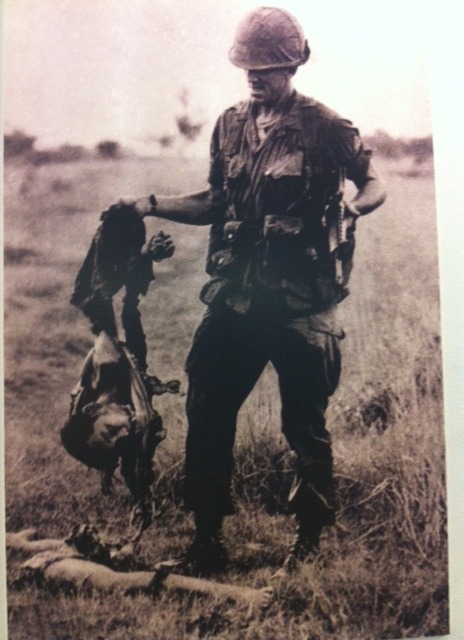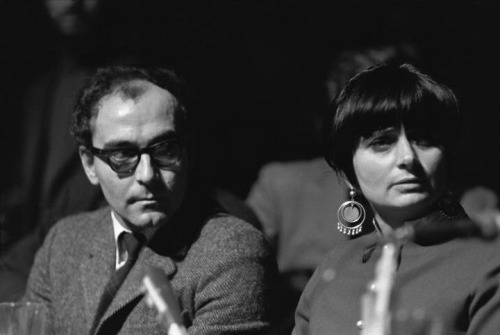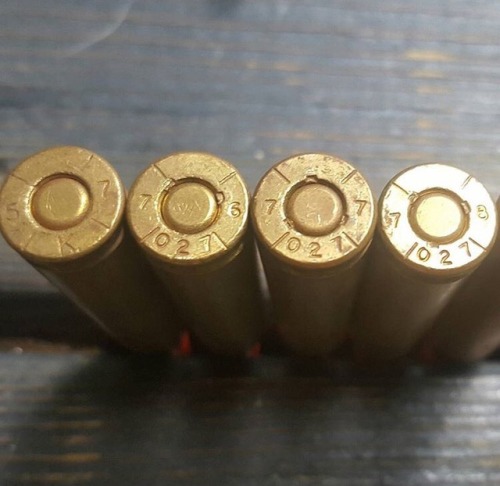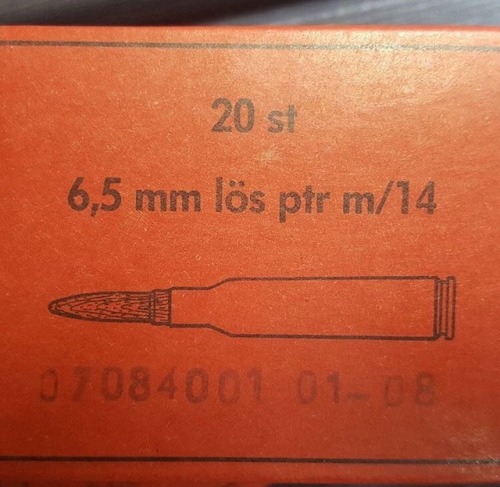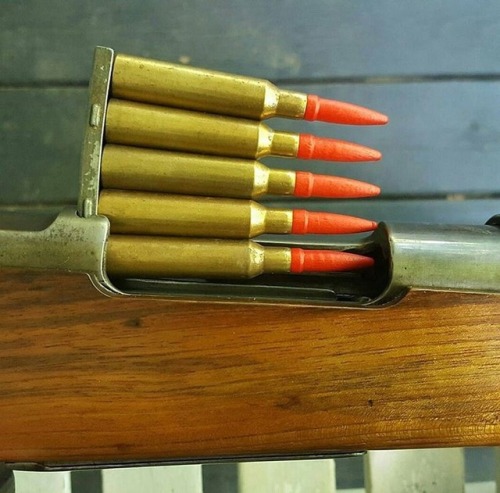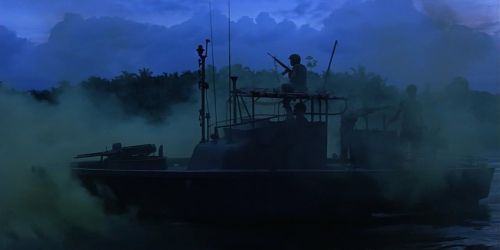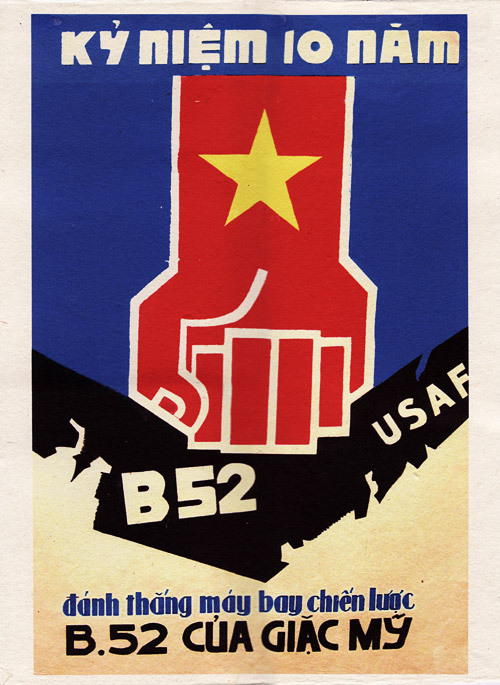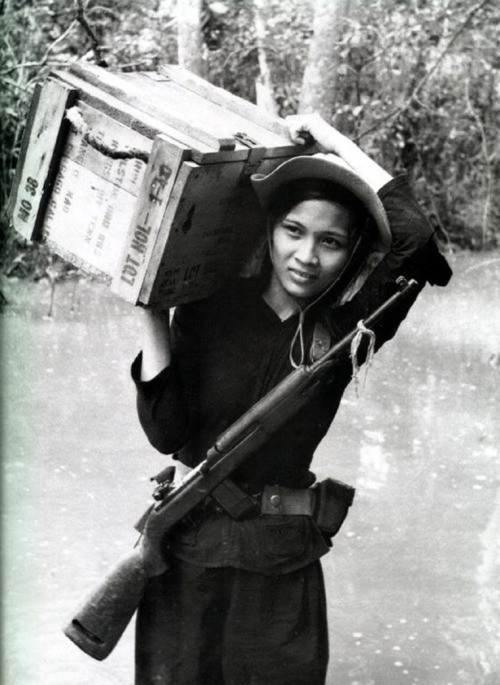#vietnam war

Halloween bé vẫn chưa có kẹooooo

“Anh ơi, em chưa đủ 18, vậy anh có muốn chờ em lên 18 để phá zin em không?” ♥♥♥

Sài gòn tôi mưa

Bé nhận làm mẫu ảnh nhé mọi người ♥
@stevebunge asked about the anniversary and about how things are here in Kent, Ohio. Thanks for the question - I’m glad for the reason to share these incredible resources with you all.
Kent State University and the city planned an extensive observance of the 50th Anniversary (that a lot of people feel is a watered-down version of what could and should have been produced.) We were able to have the opening live event on March 8th - a concert at the UCC “We March On! Music of Social Justice” featuring the Cleveland Chamber Choir and my daughter’s Kent Roosevelt High School Choir ChoralWorks.
All of the music was by women composers. One of the pieces had five parts, each a unique composition with lyrics that were the final words of unarmed black men and boys moments before they were killed.
Another, that doesn’t have lyrics, only sounds, was posted to YouTube yesterday. It’s one of the most moving pieces of choral music I’ve experienced live. I am so grateful I was there.
The next day I flew to Vegas and then everything fell apart. None of the other live events happened.
KSU compiled resources here, with a pretty good video below the fold on the home page. The video ends with an incredible performance of Ohio by David Crosby and the Sky Trails Band at the Kent Stage a few years ago. Goosebumps.
My friend David Hassler’s powerful play May 4 Voices was done as a radio play featuring Tina Fey. I can’t recommend listening to this enough - you can listen to it here.
My friend Kabir teaches Pan African Studies and is faculty adviser for Students for a Democratic Society. He and many of the students are featured in this article.
Our 33rd Annual Jawbone Poetry Festival that kicks off the actual May 4th weekend with 3 days and nights of poetry all around Kent was held as a 4 hour open reading that about 50 people tuned into on Zoom. It was strange and left a big gaping poetry shaped hole in our hearts to not be able to stand by the Cuyahoga where it bends by the railroad tracks and shout our poems against the clacking of the train and into the rolling water.
I do know that some people attended the ringing of the bell ceremony and visited Daffodil Hill (where 58,175 bulbs are planted - one for each American life lost in Vietnam). The blooms are something to behold and doubly surreal against the backdrop of the pandemic and the knowledge that more lives have been lost to COVID in only a few months.
Downtown Kent is sparse and quiet except on warm days when everyone is out walking. I avoid it and stick to my neighborhood sidewalks on the west side of town. A few restaurants have managed to stay open doing takeout and many are uncertain how to manage the dine-in experience that is set to begin on May 21. There seems to be a collective “I don’t fucking think so” in the air about reopening now.
KSU announced a $30M budget cut and adjuncts are scrambling to find work. The city is talking major cuts, too. Not sure how that will shake out yet. Nearby Akron University announced a $70M budget cut in the face of ongoing struggles pre-COVID and say they will eliminate 6 of its 11 colleges. I don’t even have words.
Meanwhile my grass is overgrown and my Dogwood and Redbud and tulips are in full glorious bloom. Garden plans are slowly coming together. I have potential work on the horizon. Kent, Ohio is a beautiful place to live but it will never be the same place it was again, just as it was never the same after the day the national guard killed four unarmed students and injured nine others, paralyzing one.
The struggle that caused May 4th continues and I am grateful for all of the people who are working so hard to help shape the new reality in a positive, healthy, equitable way in the face of so much ugliness.
A member of the United States Army’s 1st Extranormal Activities Division photographed with the remains of a Viet Cong guerilla killed by a Thành hoàng, or guardian spirit. While these village deities are generally benign and were even reported to help American and allied forces operating within their domains, in the more remote corners of Vietnam there are villages which are deemed “corrupt” or “tainted” by the ruling religion. Worshipping such shadowy beings as the Lecher, the Serpent God and the Beggar God in rituals which bear a striking similarity to those witnessed later by Soviet “Division P” troops in Afghanistan, the villages generally kept to themselves and were left alone by all sides. Unfortunately, when roused, the dark spirits are known to manifest physically and go on horrendous killing sprees far outside of their village borders. Only one such incident was officially reported, when a Soviet advisor, disregarding the warnings of his North Vietnamese comrades, led a company of VC directly through such a village. Not a single one survived, and although the Thành hoàng was eventually subdued and then banished by a sanctioned cultist, the amount of amateur footage and eyewitness accounts that was released to the public caused an uproar. From that day forward, the EAD was declassified and their “secret war” against non-human creatures and supernatural entities has become a topic of near-national obsession.
“From where I was, it looked like bad news. Being out in the open was something none of us were used to, and we weren’t sure how the increased scrutiny would affect our ability to operate. What we had never banked on was the sheer raw ability of the American public to ferret out the truth when the situation calls for it. Within months we had tips going through the roof, some of them bum tips but most of them on the spot. We were all shocked– the first year, 83% of the tips checked out, and by 1982 it was 91.5%.
"Phil Edwards, who at the time was our J-3, always thought it was the massive interest of the American people forming a sort of telepathic collective consciousness that could sniff out supernatural entities. Privately, I always wondered whether that collective consciousness would someday gain sentience and if we might someday have to fight it, and many of the officers shared my fears. That precipitated our first foray into psychic warfare, our contact with Colonel Ed Dames’ First Earth Battalion, and our eventual exploitation of the ‘battlefield of the mind’s inner reaches’ as Dames put it…”
from Major Tom Selenkow’s article “What We Do In The Shadows: On the Frontlines of America’s Deadliest Secret War” published in Soldier of Fortune magazine in 1988
Post link
Members of the Waffen-SS’s elite “Dschungel Kader” alongside Japanese occupation troops in the former French Indochina, 1960. Operating against the American-funded Viet Minh guerilla army, the Germans’ superior parachute tactics and combined-arms expertise soon ended the civil conflict and secured the Greatest East Asian Co-Prosperity Sphere’s hold on the resource-rich nation.
One of my cousins is a German-born mischling who somehow got himself caught up with the Waffen-SS (this was after Himmler’s execution in ‘56, and the subsequent relaxations of the Nürnberg Laws). He’d shown such promise in training that they selected him for the Dschungel Kader (incidentally, a lot of German Jews and part-Jews ended up serving with the Kader) and he was part of the third contingent of German troops sent to Indochina. I have some of his letters, and if you don’t mind I’ll reproduce a passage:
“23. July, 1960. My dearest sister. We had a hard piece of work against us today. Encountered our first American advisers– leather-tough special troops [spezialtruppen is the word he used, which I assume refers to Army Special Forces] in very odd striped camouflage. They were weighted down with more equipment than I have seen in three months, grenades, knives, compasses, ammunition bandoliers, rucksacks and mines, anti-tank launchers. Our entire platoon could only kill three of the four in three hours of firefighting, and we lost six of ours. Our local assistants [exact trans.] had no trouble tracking the last; they are loaded heavily and move like beasts. Americans cannot fight in jungles properly, not at all.
[…] We did finally get our hands on the fabled new American automatic rifle, known as the M-16. It is a beautiful thing, light and easy to fire with practically no recoil. I would have taken one, but the ammunition is of a remarkably strange caliber, much different than our Kurz round. As it is, we sent them back for analysis…”
The letter goes on, but I feel that that’s enough. Anyway, just posting these online is enough to get HUAC down your throat. And my family’s connections to Germania have already gotten us investigated multiple times. The war rages on, I guess…
Post link
Jean Luc Godard et Agnès Varda
Meeting contre la guerre du Vietnam, 1967 / Photos de Raymond Depardon
Post link
Feeding time after a mission with elements of the 4th Infantry Division, US Army, Kontum Province, 1968.
Post link
6.5x55 wooden training ammunition. The Swedish military even developed a “blank firing adapter” for the M/96, which worked by shredding the wooden projectile. When the round was expended, the brass was kept and recycled. Opening my first box of ammo I saw casings from 1957-1979. -A
Post link

Seizure of the SS Mayaguez
Shortly after the fall of Saigon, the merchant ship SS Mayaguez left Hong Kong on what was considered a routine voyage to Sattahip, Thailand. The ship was piloted by Captain Charles T. Miller, a veteran with more than 40 years experience, and a crew of 39 seamen.
The international shipping lane brought the Mayaguez within eight miles of Poulo Wai Island. Unknown to Captain Miller, the Cambodians had recently claimed these waters as theirs; according to them the Mayaguez was trespassing.
After 2 p.m. local time on May 12, 1975, the Mayaguez was approached by a small, fast gunboat. The boat fired across the bow of the Mayaguez. The sailors on the boat were young Cambodian men from the Khmer Rouge army - and they were armed with machine guns that they aimed at Captain Miller and his crew.
Captain Miller sent a mayday message: “Have been fired upon and boarded by Cambodian armed forces at 9 degrees/48 minutes north/102 degrees /53 minutes east. Ship is being towed to unknown Cambodian port.”
In Washington, DC, President Ford was alerted to the situation. During the first of an on-going series of National Security Council meetings over the next few days, President Ford and his advisers discussed if this was an act of piracy. “Yes” was the clear answer. They would continue to assess the situation and hammer out a decisive response.
Press Secretary Ron Nessen issued a statement regarding the ship’s seizure following the meeting, telling the press that the President “has instructed State Department to demand the immediate release of the ship. Failure to do so would have most serious consequences.”
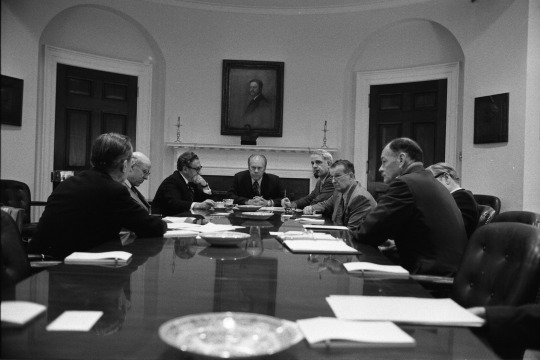
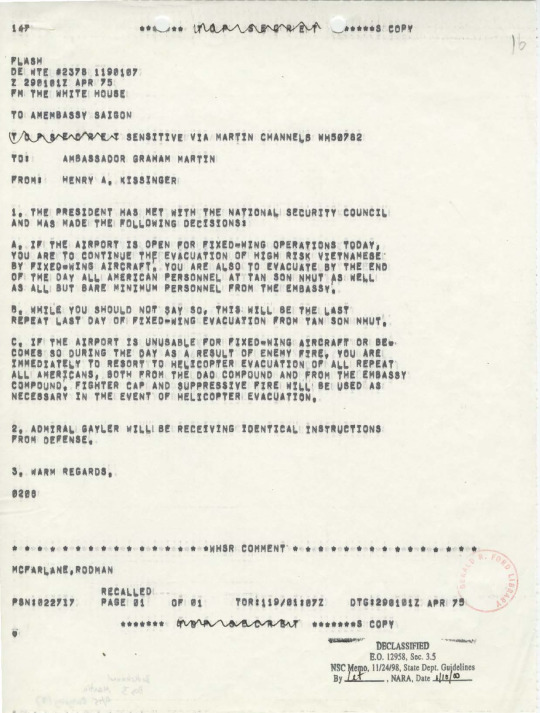
President Ford convened the National Security Council in the evening of April 28, 1975, to discuss the final evacuation of Saigon, Vietnam.
Secretary of Defense James Schlesinger, Secretary of State Henry Kissinger, Joint Chief of Staffs Chairman General George Brown, Director of Central Intelligence William Colby, and Deputy National Security Adviser Lt. General Brent Scowcroft reported on conditions around the city and the advance of North Vietnamese troops.
The meeting ended at 8:08 p.m. with the President and NSC having decided to continue the evacuation by fixed-wing aircraft at Tan Son Nhut airport for as long as possible. The helicopter lift would begin once the other planes could no longer get in.
President Ford continued to monitor developments in Saigon with Secretary Kissinger. Within a few hours North Vietnamese shelling of Tan Son Nhut airport and debris on the runways prevented military transport planes from landing there. Around 11:00 p.m. President Ford ordered the final evacuation.
Secretary Kissinger sent a telegram to Ambassador Graham Martin to inform him of the President’s decision regarding the evacuation. Over the course of sixteen hours, helicopters removed over 6,500 U.S. and South Vietnamese personnel from the city. Saigon fell under the control of North Vietnamese forces on April 30, 1975.
Images: President Gerald R. Ford Presiding Over a National Security Council Meeting Regarding the Situation in South Vietnam, 4/28/1975 (National Archives Identifier 23898449)
Telegram from Henry Kissinger to Ambassador Graham Martin Regarding President Gerald R. Ford’s Decision on the Evacuation of Saigon, South Vietnam, 4/29/1975 (National Archives Identifier 7367498)
The Clone Wars: Darkness on Umbara was inspired by the Vietnam War, right? The scene between Rex and General Krell reminds me so much of some interactions between sergeants with a long history in-country and newly deployed LTs fresh out of ROTC or one of the military colleges.

A meme inspired by my readings for my Vietnam War seminar. Needless to say, Gen. Giap had the high ground.
Apocalypse Now (1979)
Cinematography: Vittorio Storaro
Cast: Martin Sheen (Capt. Benjamin Willard), Marlon Brando (Colonel Walter E. Kurtz), Robert Duvall (Lt. Colonel William “Bill” Kilgore), Frederic Forrest (Engineman 3rd Class Jay “Chef” Hicks), Albert Hall (Chief Petty Officer George Phillips), Sam Bottoms (Gunner’s Mate 3rd Class Lance B. Johnson), Laurence Fishburne (Gunner’s Mate 3rd Class Tyrone “Mr. Clean” Miller), Dennis Hopper (Photojournalist), Harrison Ford (Colonel G. Lucas)
Director: Francis Ford Coppola
All shots from: Original film, Redux, and Final Cut.
Post link
“10 Anniversary of the Strategic Defeat of the American Army’s B-52 Bomber”
Vietnamese Propaganda Poster Art
Post link
A member of the South Vietnamese Popular Force carries a crate of ammunition, circa 1967. These local militia fighters defended South Vietnamese villages against attacks by the Viet Cong.
Post link


